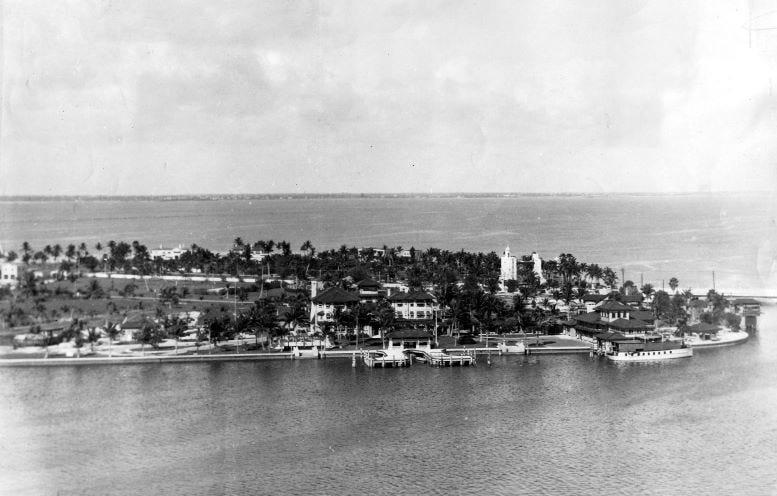Al Capone in Miami – Part 2 of 4
A four part series on Al Capone's time in South Florida. Part two shares the story of Capone's business relationships in Miami, the Saint Valentine's day massacre, and his arrest in Philadelphia.
The first full year in South Florida was both hectic and rewarding for Al Capone. While he continued to conduct business in Chicago, Capone was beginning to set roots in Miami. This idea made many of the prominent South Floridians very uncomfortable.
The same leaders that were involved in legitimate business, were also very involved with the sorts of activities that had earned Capone the distinction of being public enemy number one. Illegal gambling operations and sale of alcohol to the tourists were deemed okay as long as they were provided by the current establishment.
Prominent men such as Carl Fisher, Everest Sewell, James Cox and many others were comfortable living outside the law when it came to matters of indulgence. However, they were not comfortable with allowing the “syndicate” to take root in their community and begin to change the balance of power and disrupt the rhythm of indiscretion in Miami and Miami Beach. Prior to Capone's arrival, there was a certain harmony to how Miami and the beach operated when it came to the illegal vices of the day.
Rest, Recovery and Relaxation for Al Capone
With the exception of the first half of January in 1929, Al Capone was enjoying his first year in his Palm Island home. At the turn of the year, Capone was bed ridden with what started as influenza and then progressed to double pneumonia. Although the exact dates of his incapacitation would be later be questioned, Capone was not seen around town until the second week of January.
Once Capone felt well enough to leave his home, he would begin to enjoy the amenities of living in South Florida. Capone was routinely spotted at the Miami Jockey Club in Hialeah to watch the horse races. As was uncovered during his contempt of court hearing in June of 1931, Capone was spotted by several local law enforcement officials, in good health, attending races at the race track between January 13th and March 5th of 1929.
On February 2nd of 1929, Capone chartered a plane to fly himself and some friends to Bimini for a picnic. Charter Captain Edward Nirmaier was quoted as saying that he charged Capone $150 and was tipped another $100 for a trip to enjoy salami sandwiches and drink beer. Capone also enjoyed a longer vacation, by steamer, to the Bahamas from February 8th through the 12th.
Capone’s vacations would later be used against him when he petitioned a Chicago court for postponement of a hearing he was subpoenaed to appear on March 12th, 1929. He waited until March 11th to ask for postponement and said he was too sick to appear in court. On March 27th, 1929, Capone was cited by the federal court in Chicago for contempt of court. He was arrested and released on $5000 bond. It would take two years before Capone would be tried for this contempt of court charge.
It was said that Capone did enjoy playing golf and tennis while he was in South Florida. He wasn’t very good at either. However, that didn’t keep him from displaying his famous temper when things didn’t go well at either sport.
Capone was very well known for his dinner parties and all day card games. Jack Sewell, son of Miami Pioneer John Sewell, recalled walking into Capone’s home during a poker game and seeing nothing but $1000 bills on the table. After Sewell arrived, Capone turned to him and said “I’m out, these scoundrels have taken me for $250,000”.
There was even an urban legend that, while president-elect Herbert Hoover was staying at JC Penney’s home on Belle Island in January of 1929, Capone’s loud parties on Palm Island disturbed Hoover’s stay in Miami Beach. The legend went on to say that, because Capone disrupted what was to be a quiet vacation, Hoover made getting Capone a priority during his first term as president. However, none of Capone’s biographers have found any evidence that Hoover’s policies relating to Capone had anything to do with his vacation on Belle Island in 1929.
Keep reading with a 7-day free trial
Subscribe to Miami History to keep reading this post and get 7 days of free access to the full post archives.






